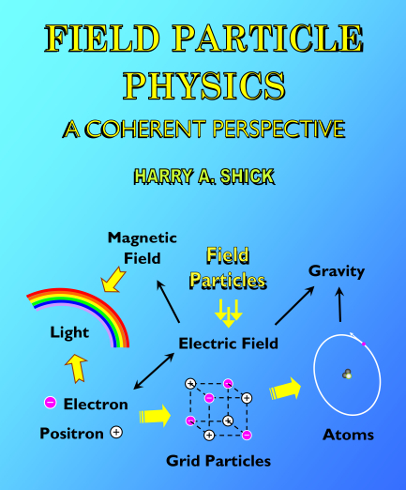Force, Energy and the Metric System
Decades past, I think it was in the early 70’s, the U.S. government contemplated switching to the metric system. To gain support for this idea, a series of media ads were sponsored. The apparent purpose of the ads was to show why the conversion was a good idea. The ads, however, were not inspiring. The one I remember best went something like this. The length of a meter is not arbitrary. If the world’s official meter stick, which is kept in a temperature controlled vault in France, were destroyed; the length of a meter could be recalculated by dividing the circumference of the Earth, at the equator, by a ridiculously large, number. The idea of measuring the Earth’s circumference, to redefine the length of a meter, is ludicrous. Clearly, the person in charge of the project, didn’t want to convert; but, if the metric system is so easy to use, why resist?
Problems in Physics
One possible answer is: it’s hard to get excited about a measurement system that has too many units, and supports too many conflicting systems of measurement. Let’s begin with the units. The "CRC Handbook of Chemistry and Physics" lists seven base units for the metric system (meter, kilogram, second, amp, kelvin, mole, candela), and dozens of secondary units. Each secondary unit represents a specific combination of units, and is used in a manner similar to an abbreviation. These shortcut (secondary) units are considered necessary; because, it takes too long to write out the primary units associated with specific measurements. There are far too many unnecessary units associated with the metric system.
In regard to conflicting systems of measurement, the most widely recognized problem relates to electricity. Static forces are measured using Coulomb’s law. Ohm’s law applies rules to flowing charges. Until recently (Jan 10, 2024), these two systems of measurement were not compatible. The reason, one system measures force and the other measures energy. To understand why forces are not compatible with energy, let’s look at how each measurement is applied to a collision.
It has been observed, when an object is deformed in a collision, the amount of deformation is proportional to the velocity squared. Double the velocity and the deformation quadruples. To accurately calculate deformation, it is necessary to use a fluid force equation. (This is because, deformation is a fluid process.) Fluid force, FΦ, is equal to the product of the deformed object’s density, D, the interaction area, A, and the interaction velocity squared, v2. (FΦ=DAv2) The units associated with fluid force are kilograms, meters per second squared, kg m/sec2. This unit combination is apparently too long; so, its secondary unit is called a newton, abbreviated N.
Now consider, what happens when the observer doesn’t recognize deformation as a fluid process?
As stated, deformation is proportional to the velocity squared; therefore, the resulting equation would include a velocity squared factor. One would then reason, every real object has mass, m; so, mass must be another factor. The units for this product would be kilograms, meters squared per second squared, kg m2/sec2. This unit combination is called a joule, abbreviated J. The base units for a joule are inconsistent with the base units of a force; so, the resulting product uses a different name. That name is energy, E.
If the observer had had any knowledge of fluids, the concept of energy, the unit joule, measurements based on energy (power, rotational inertia, radioactive decay, heat capacity, etc.), and their associated units, would not exist. Without energy, the metric system has one less conflicting system of measurement, fewer secondary units, and physics becomes exponentially easier.
As stated in Surpassing the Theory of Everything, “If a single piece of your foundation is composed of garbage, then anything built upon that foundation is also garbage.” This fact cannot be stressed enough. The rules of physics extend to every other science. Chemistry, geology and astronomy are among the sciences affected directly. All the biological sciences are affected through chemistry. Every science has at least one link to physics. If any part of physics is wrong, errors will exist in the foundations of other sciences too. This is why it is so important to have a strong, coherent, foundation in physics. It is also why inconsistencies, and errors, must not be tolerated.
Resolving the problems in physics
The problems in physics can be resolved; but, the process must begin with a solid foundation. That foundation must be limited to one system of measurement, and have limited units. It must be free of errors and inconsistencies; and, every part of that foundation must be directly linked to, and required by, every other part. If this sounds impossible, it’s not. Such a foundation has existed since January 10, 2024.
In his book, Field Particle Physics: A Coherent Perspective, Harry A. Shick presents seven universal rules (which include Newton’s three laws of motion), and uses those rules to mechanically explain electricity and magnetism. This information is then expanded upon to explain light, subatomic structure, subatomic forces, atomic orbits, molecule formation, and the source of gravity. The book corrects the photoelectric effect, debunks relativity, consolidates Ohm’s and Coulomb’s laws, explains light’s constant speed, discusses the universal expansion error, and exposes numerous other mathematical, procedural, conceptual, and unit errors. Every component of this foundation is required by every other component; and, every measurement is consistent with Newton’s first law of motion. Additional levels of complexity are unnecessary. The foundational concepts, which can be taught in middle, or high, school, can be applied to any area of physics, at any scale (subatomic to universal), and at any grade level. Simply stated, Field Particle Physics: A Coherent Perspective, provides a solid foundation in physics, making it a must read ….
HOLIDAY SALE! $10.00 OFF + FREE SHIPPING!
US ORDERS ONLY!

